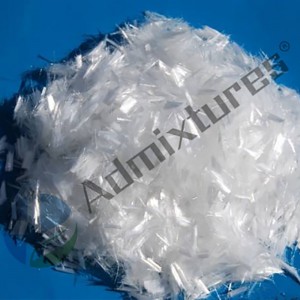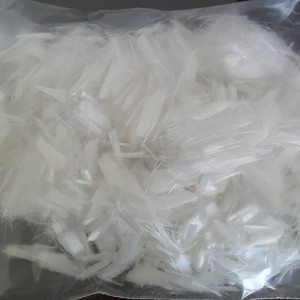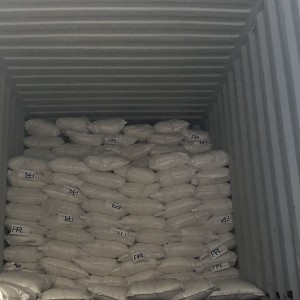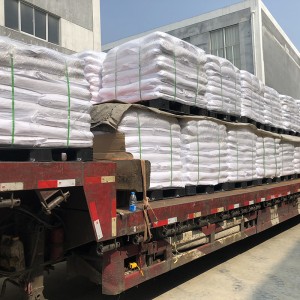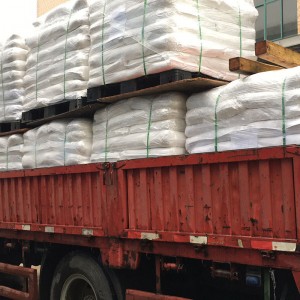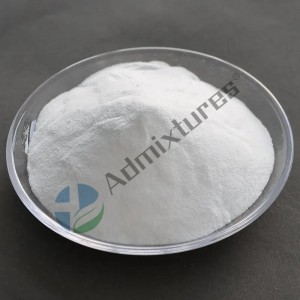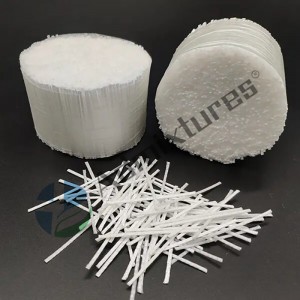
Products
YL-PPF POLYPROPYLENE FIBER
YL-PPF POLYPROPYLENE FIBER
Description
YL-PPF is a high-strength bundled monofilament fiber made from polypropylene through a special process. Adding it to concrete or mortar can effectively control the micro-cracks of concrete or mortar, and greatly improve the crack resistance, impermeability, impact resistance and earthquake resistance of concrete.
Performance
●Excellent crack resistance: The fibers are evenly distributed three-dimensionally within concrete, reducing stress concentration at the tips of microcracks, weakening or eliminating the tensile forces caused by desiccation, effectively preventing the occurrence and development of microcracks, and significantly improving the material's crack resistance.
●Excellent impermeability: The evenly distributed fiber filaments form a support system that inhibits surface water loss and aggregate settlement, reducing concrete water seepage and minimizing water seepage channels, significantly reducing the material's internal porosity and thus significantly improving impermeability.
●Improved freeze-thaw resistance: The presence of fibers reduces the internal compressive stress concentration of concrete caused by multiple freeze-thaw cycles, preventing further growth of microcracks and enhancing the material's durability in freeze-thaw environments.
●Enhanced impact resistance and toughness: When a concrete component is impacted, the fibers help absorb kinetic energy. At the same time, their crack-blocking effect prevents rapid propagation of internal cracks, effectively enhancing the material's impact resistance and toughness.
●Improved durability: Reduces internal porosity, slowing the erosion and penetration of moisture, corrosive chemicals, chloride salts, and other environmental factors, reducing damage to structural reinforcement and significantly improving concrete durability.
●Improved fire resistance: When the internal temperature of a concrete component rises above 165°C, the fibers melt, forming interconnected channels that allow high-pressure steam to escape, effectively preventing explosions in fire environments.
Application
●Concrete structures in various construction projects, such as beams, slabs, columns, and walls in buildings.
●Municipal engineering projects, including roads, bridges, tunnels, culverts, and drainage pipes.
●Water conservancy projects, such as dams, channels, and reservoirs.
●Mortar projects, such as interior and exterior wall plastering, floor screeds, and tile mortar.
Construction Technology
●Correctly calculate the weight of fiber added each time according to the volume of concrete mixed and the mix ratio requirements (or recommended dosage).
●After the sand and gravel materials are prepared, add the fibers. It is recommended to use a forced mixer.
●Add the aggregates together with the fibers into the mixer, but be careful to ensure that the fibers are added between the aggregates, dry mix for about 30 seconds, add cement and water, and wet mix for about 30 seconds to fully disperse the fibers.
●Take random samples after mixing. If the fibers have been evenly dispersed into single filaments, the concrete can be put into use. If there are still bundles of fibers, extend the mixing time by 20-30 seconds and it can be used.
●The construction and maintenance process of fiber-added concrete is exactly the same as that of ordinary concrete.
Specification
| Material |
Polyprolylene |
| Color |
Nature(White) |
| Elongation at Break (%) |
≥15 |
| Modulus of elasticity(Mpa) |
≥3500 |
| Density(g/cm3) |
0.91~0.93 |
| Type |
Bunchy monofilament |
| Identical Diameter(µm) |
25-40 |
| Length(mm) |
3, 6,10,12,15,19 |
| Tensile Strength(Mpa) |
≥450 |
Dosage
For mortar, the recommended dosage is 0.9-1.2kg; For concrete, the recommended dosage is 0.9-1.8kg.
In all cases, test is recommended to achieve the desired concrete property.
Package & Storage
Inner package: plastic film in 1.0kg/bag; Outer package: woven plastic bag in 20kg/bag.
It should be stored in a dedicated warehouse that is well-ventilated and dry and keep away from moisture.


